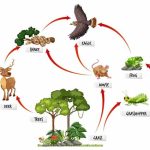Cognitive development should always be one of the priorities when it comes to the development of a child. Different subjects teach kids different aspects of education and life, all being important for a kid’s overall growth and development. It is important for a kid to be aware of his or her surroundings. It is equally important for kids to also be socially and environmentally conscious. As the resources of the world are depleting at an extremely fast rate, it is up to us, parents, to preserve them for the next generation. It is crucial to use resources judiciously and wisely. Apart from doing so, we must instil the same in our little ones.
There are two kinds of energy, known as Renewable and Non-Renewable Energy. Simply put, renewable energy refers to those resources, which are in abundance and get replenished or replaced naturally. Non-renewable energy, as the term implies, refers to those kinds of resources which once used up, cannot be replaced. As parents and caregivers, we must educate our little ones on the importance of using renewable and non-renewable energy judiciously so that they can be enjoyed by generations to come. Before we delve into the types of renewable energy for kids, let’s have a look at what renewable energy is.
What is Renewable Energy
It is a form of energy that is naturally available and is replenished or replaced time and again. The reason why most people prefer this type of energy to non-renewable energy is because it doesn’t produce greenhouse gases and is a more sustainable alternative for our planet. They are also more cost-effective and easily available when compared to their counterparts. Some examples of renewable energy include wind, water, and the sun. These are also known as renewable energy sources as they are quite literally the sources of renewable energy.
Types Of Renewable Energy
There are many types of renewable energy and luckily for you, we’ve got it listed and explained so you can teach your little ones.
- Solar Energy- This is one of the most widely available and used forms of renewable energy. It is harnessed from sunlight during the day using solar panels or solar collectors. They are used to absorb sunlight and can even perform well on cloudy days. The brilliant thing about these solar panels is their longevity. They last for around twenty-five to thirty years. The energy trapped by solar panels can be used at a later time to provide light, heat and other types of electricity.
- Wind Energy- One of the major sources of renewable energy happens to be the wind. Similar to solar energy, wind energy refers to the energy extracted from the wind. For this, wind turbines are put to use. However, one downside to this form of energy is the irregular flow of wind. Owing to this, wind turbines cannot be installed in every part of the world. Also, to make full use of extracting energy from the wind, more than one or two turbines need to be installed at a single location. A prime example of this is a wind farm. Since they require a large area to be set up, they must be carefully planned.
- Hydroelectric Energy- Also known as hydroelectric power, refers to the energy generated by water. Simply put, hydroelectric power is using flowing water to generate electricity. When dams are opened, water gushes out at a high speed. This fast-flowing water is used to turn turbines. These turbines are connected to a generator which outputs the electricity. Hydropower reservoirs are frequently used to meet basic needs like clean drinking water, water for irrigation, drought management and delivery of electricity.
- Geothermal Energy- This type of energy is generated from thermal energy that is present in the earth. Volcanoes and hot springs are two examples of sources of geothermal energy. Heat energy is captured from them and is used by industries for heating water and other similar purposes.
- Biomass Energy- Biomass is a biological material that is derived from living organisms. It can be simply used directly through the process of combustion to produce heat or even indirectly when converted to biofuel.
Advantages Of Renewable Energy
- One of the prime reasons that people resort to renewable sources of energy is because they are environmentally friendly. Unlike fossil fuels, they do not contribute to climate change and pollution.
- They are sustainable and available in abundance. They are natural resources which are replenished.
- Renewable sources of energy are more cost-effective. They also involve minimal maintenance requirements.
- Relying on renewable energy reduces our dependence on fossil fuels and as well as our vulnerability to price fluctuations. Thus, it is both a stable and secure source of energy.
- Renewable energy has created many jobs for people. Since certain techniques require a skilled labour force, more and more people have been employed.
Disadvantages Of Renewable Energy
- One of the major drawbacks is the land and space requirements. Large-scale solar panels and wind farms require a huge area of land to be properly installed.
- The initial cost of setting up renewable energy equipment is extremely high. This may discourage potential adopters.
- Most renewable energy sources are intermittent and variable. They are subject to weather conditions and different times of the day.
Here at EuroKids, we do our best to ensure that your child gets the best when it comes to health, nutrition and education. Our curriculum is carefully planned and skillfully designed by our team of experts to yield immediate and long-term results. Children need to be taught about their surroundings, the environment and even about renewable sources of energy. If you wish to learn more about what we do, head down to our nearest EuroKids centre.
















